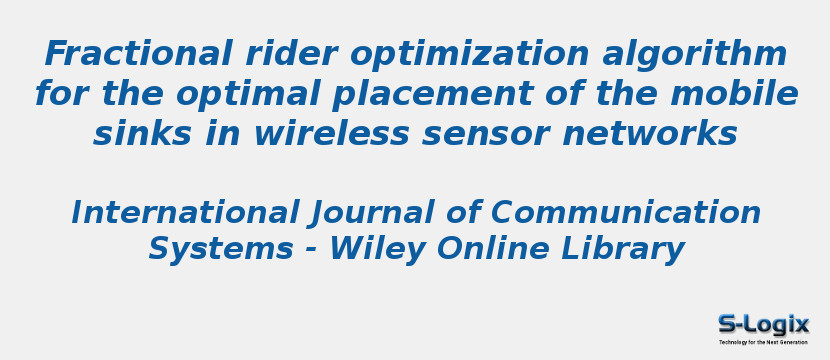Research Area: Wireless Sensor Networks
Wireless sensor networks (WSNs) employ the mobile sinks to gather the information from the sensors deployed in the environment periodically, in such a way to avoid the energy-crisis and hotspot issues. Delay in visiting all the nodes is addressed through the rendezvous points that collect the data from other nodes such that the nodes collect the data from this point rather than visiting all the nodes, which saves energy. However, the optimal placement of the mobile sinks to visit those rendezvous points is a need, which is addressed optimally using the proposed fractional rider optimization algorithm (FROA). The FROA is the modification of the rider optimization algorithm (ROA) with the fractional theory, and the ultimate goal of the proposed algorithm is to optimally place the mobile sink for which initially, the wireless sensor environment is split as uniform-sized cells with the Voronoi partitions and clusters are formed using sparse fuzzy c-means (sparse-FCM) algorithm. The constraints for enabling the optimal sink placement are distance, delay, and energy of the nodes. The simulation analysis reveals that the proposed method outperformed the existing algorithms, with minimal distance of 132.2069 m, maximal network energy, alive nodes, and throughput of 21.4605, 56, and 62.3702, respectively.
Keywords:
Author(s) Name: Arikrishnaperumal Ramaswamy Aravind, Rekha Chakravarthi
Journal name: INTERNATIONAL JOURNAL OF COMMUNICATION SYSYTEMS
Conferrence name:
Publisher name: Wiley
DOI: 10.1002/dac.4692
Volume Information: Volume34, Issue4 10 March 2021
